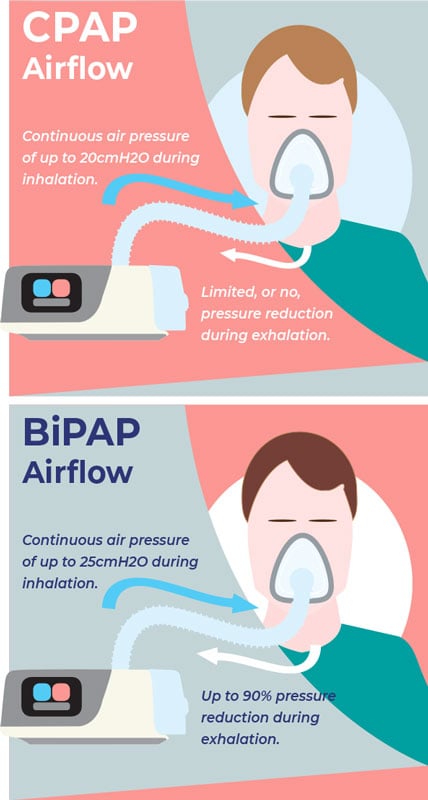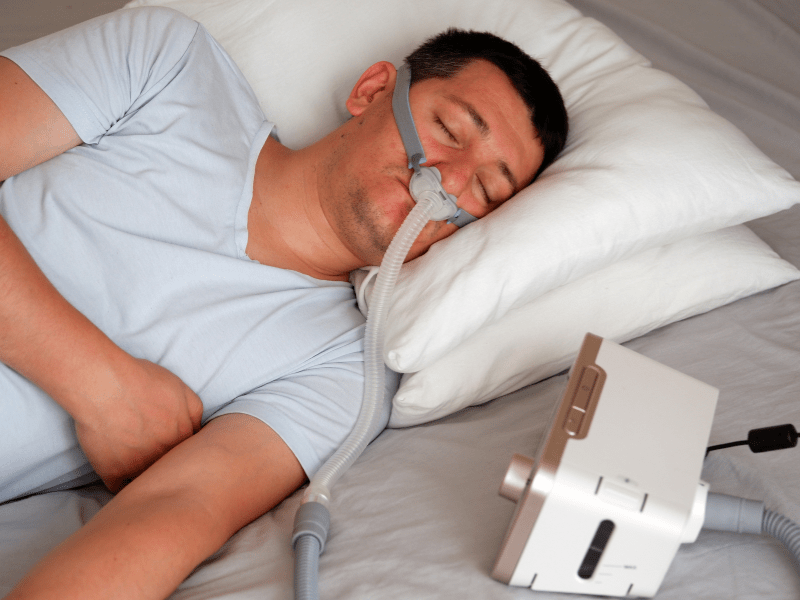Affordable Options for BiPAP Rental Solutions Near You
Affordable Options for BiPAP Rental Solutions Near You
Blog Article
Bipap vs. CPAP: Which Is the very best for Your Sleep Condition?
When browsing the complexities of sleep conditions, the option in between BiPAP and CPAP treatment is a crucial consideration. Each technique uses one-of-a-kind benefits tailored to particular conditions, yet the decision hinges on individual patient needs and comfort levels. While CPAP provides a constant air movement ideal for obstructive rest apnea, BiPAP's twin stress settings may boost convenience for those with more intricate respiratory concerns. Comprehending these distinctions can considerably impact therapy effectiveness, leaving one to consider which choice truly straightens with their wellness needs and lifestyle.
Comprehending Rest Disorders
Sleep problems include a variety of conditions that disrupt typical rest patterns, impacting both the quality and period of rest. These conditions can show up in different kinds, including sleep problems, sleep apnea, narcolepsy, uneasy leg syndrome, and parasomnias. Each condition provides unique difficulties, frequently bring about considerable daytime exhaustion, cognitive disability, and psychological disruptions.
Sleeping disorders is characterized by problem dropping or staying asleep, while rest apnea involves repeated disturbances in breathing throughout sleep, commonly leading to fragmented rest. Narcolepsy, on the other hand, is noted by excessive daytime sleepiness and sudden rest strikes. Restless leg syndrome causes uneasy experiences in the legs, triggering an uncontrollable urge to relocate them, which can additionally impede the capability to fall asleep.
The influence of sleep problems expands beyond specific wellness, affecting overall efficiency, connections, and top quality of life. Recognizing the specific nature of each disorder is vital for reliable medical diagnosis and therapy. As sleep health and wellness ends up being progressively recognized as an important component of overall well-being, addressing these disorders is essential for boosting both rest high quality and everyday functioning.
How CPAP Functions
Continual Positive Air Passage Pressure (CPAP) treatment is regularly used as a key therapy for obstructive rest apnea (OSA) The mechanism of CPAP involves using a maker that delivers a steady stream of air with a mask used during sleep. This air flow maintains favorable pressure in the respiratory tract, protecting against the collapse or blockage of the throat that can take place throughout rest.
When a patient takes in, the CPAP machine gives a constant flow of air, making certain that the air passage remains open - BiPAP Rental. This not just eases the signs of OSA, such as snoring and interfered with sleep patterns, but additionally decreases the associated health and wellness risks, consisting of cardiovascular issues and daytime fatigue
The pressure settings on a CPAP maker can be customized to satisfy specific patient requirements, usually figured out through a rest study. On the whole, CPAP treatment has been revealed to considerably boost the quality of rest and total health and wellness for people experiencing from obstructive sleep apnea.
Exactly How BiPAP Works
BiPAP, or Bilevel Positive Air Passage Pressure, is a specific kind of non-invasive air flow that is especially advantageous for patients with conditions such as complex sleep apnea or breathing conditions. Unlike CPAP, which provides a constant stream of air at a solitary pressure, BiPAP supplies two unique stress setups: a greater inspiratory pressure for click to investigate inhalation and a lower expiratory pressure content for exhalation. This dual-pressure method permits easier breathing, decreasing the effort called for during exhalation.
The device operates through a mask fitted over the nose or mouth, linked to a maker that generates atmospheric pressure. When the client breathes in, the equipment supplies the greater stress to assist with air movement, making certain that the air passage remains open. Upon exhalation, the maker automatically decreases the stress, making it a lot more comfy for the person to take a breath out.

Trick Distinctions In Between BiPAP and CPAP

On the other hand, BiPAP (Bilevel Positive Airway Pressure) provides two various stress setups: one for inhalation and a lower one for exhalation. This double stress system permits more comfy breathing, especially for clients that struggle with breathing out against a continuous stress. BiPAP is commonly advised for individuals with complex sleep apnea, chronic obstructive lung condition (COPD), or those that require added support during rest.
In addition, the complexity of BiPAP tools usually causes a higher price and requires a lot more cautious titration than CPAP. BiPAP Rental. Understanding these vital distinctions can assist in identifying which tool might be extra suitable for details sleep conditions, establishing the groundwork for informed therapy decisions
Choosing the Right Therapy
The choice in between BiPAP and CPAP treatment mostly pivots on the details qualities of the rest disorder, the individual's general wellness, and their convenience with the gadget. CPAP, which provides a continual stream of air, is generally suggested for obstructive sleep apnea (OSA)
On the other hand, BiPAP offers two degrees of pressure: one for breathing and a lower one for exhalation. This double stress system is useful for patients with complicated rest apnea or those that experience trouble breathing out versus a continuous stress. Furthermore, BiPAP is often suggested for individuals with respiratory problems, such as persistent obstructive pulmonary disease (COPD), where differing pressure setups can enhance convenience and conformity.
Inevitably, a comprehensive evaluation by a sleep expert, including a rest research study, can aid identify which treatment aligns finest with the patient's requirements. Factors such as comfort, convenience of use, and particular clinical conditions ought to additionally be considered to optimize therapy results.
Conclusion
In recap, both BiPAP and CPAP serve distinctive functions in the monitoring of sleep disorders. CPAP works for obstructive sleep apnea with constant air flow, while BiPAP uses twin stress setups that boost convenience for those with complex rest apnea or respiratory system issues. The choice between these therapies ought to be directed by private requirements and conditions, requiring a comprehensive assessment by a sleep expert to make certain optimum therapy results and enhanced high quality of rest.

On the whole, CPAP therapy has actually been revealed to considerably enhance the quality of sleep and overall health and wellness for people suffering from obstructive rest apnea.
BiPAP is typically advised for clients with intricate sleep apnea, persistent obstructive lung illness (COPD), or those that need additional assistance during sleep.
CPAP is reliable for obstructive sleep apnea with constant airflow, while BiPAP provides twin pressure setups that enhance convenience for those with intricate sleep apnea or breathing concerns.
Report this page